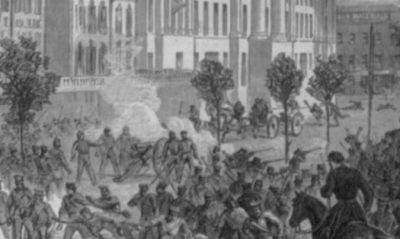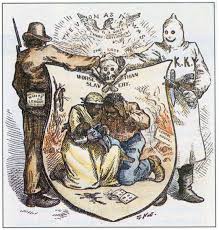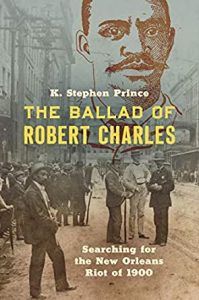History of Racist Violence against African Americans: Disarming the Black Masses Secured the Failure of Reconstruction
Lessons are to be learned from the post-civil war era to the contemporary struggle for liberation and social justice

All Global Research articles can be read in 51 languages by activating the “Translate Website” drop down menu on the top banner of our home page (Desktop version).
To receive Global Research’s Daily Newsletter (selected articles), click here.
Visit and follow us on Instagram at @globalresearch_crg.
***
During the period of the enslavement of African people by Britain and the United States, violence was a key instrument in the maintenance of the exploitative and oppressive system.
African people between the 17th and 19th centuries prior to the eruption of the Civil War (1861-1865), were largely prohibited from owning and carrying firearms.
Of course, there were exceptions during the war of separation from Britain during the 1770s and 1780s, when Africans fought on both sides of the conflict over who would control the 13 colonies located in the eastern region of what would become the U.S. Also, the War of 1812, when the British attempted to retake their colonies in North America, Africans participated again in both the U.S. and English military campaigns.
However, within these contexts, the enslaved and free Africans were objectively fighting on behalf of European colonial regimes and not for their own freedom. Although the British and the Americans told the Africans that their service in the war of independence and 1812 would lead to emancipation, slavery and national oppression continued leading up to the beginning of the Civil War.
Approximately 200,000 African men and women served in the army and navy during the war between the states. There was extreme resistance among the ruling class to the enlistment of African soldiers in the Union army. Nonetheless, the failure of the administration of then President Abraham Lincoln to quell the rebellion during the first year-and-a-half of the war, by late 1862, a decision had been made to arm Blacks to fight the Confederacy.
Image on the right: White supremacist overthrow Reconstruction
Many African enslaved people had already fled from plantations and cities to take refuge among the Union troops. W.E.B. Du Bois in his pioneering book entitled “Black Reconstruction in America: An Essay Toward a History of the Part Which Black Folk Played in the Attempt to Reconstruct Democracy in America, 1860-1880), described the movement away from plantations in a chapter entitled “The General Strike.”
However, after the defeat of the Confederacy in April 1865 and the assassination of Lincoln just days after the end of the Civil War, the successor President Andrew Johnson of Tennessee opposed any meaningful Reconstruction as advocated by the Radicals within the Republican Party of the time. Eventually the Reconstruction Act of 1867 provided for the organization of militias which were supportive of the building of a democratic existence in the former antebellum South.
These militias composed of African Americans and some whites were vilified by the Democratic Party press, southern politicians and former slave owners. Eventually, when the federal government withdrew its support for Reconstruction after the elections of 1876, the Black militias were subjected to harsh treatment by the white vigilante groupings such as the Ku Klux Klan and the White Leagues.
In a book published by the white southern-born historian, Otis A. Singletary, in 1957, the hostility towards the armed Black militias empowered to defend the Reconstruction state governments in the South is clearly enunciated. Singletary attributes much of the violence in opposition to Reconstruction to the Radicals and the arming of Black men in militia groups in several southern states including Arkansas, Louisiana, Alabama, among others.
“Governor Brownlow (Tennessee), for instance, expressed his displeasure at both the freedom with which Negro militiamen used their guns and their general attitude toward whites. However, the main deterrent was fear. Haunted by the specter of race war, governors temporized and satisfied themselves with half-measures. In Alabama, numerous applications from ‘colored fellow citizens from Mobile, Selma, and Montgomery’ requesting permission to organize militia companies were turned down by the adjutant general on explicit orders from Governor Lewis. Ames hesitated a long while before finally calling up his Negro troops in Mississippi, and, by his own admission, the delay was prompted by his fear that arming militia would cause that state ‘to drift into a war of races.’”
New Orleans Race Terror: 1874 and 1900
Two examples of the fear and hatred generated by the arming of African Americans in their own self-defense along with solidifying the policies of Reconstruction, were reflected in the outbreaks of violence in New Orleans, Louisiana during 1874 and again at the turn of the century. A dispute over the outcome of the 1872 elections generated protracted disputes which lasted well into 1874.
On September 14, 1874, an estimated 5,000-armed members of the White Leagues, many of whom being former Confederate soldiers, attacked the Capitol with the aim of overthrowing the Reconstruction state government of Republican Governor William Pitt Kellogg. Initially, the White Leagues outnumbered the New Orleans Metropolitan Police and the Black militiamen, inflicting serious casualties including deaths. The reactionaries held out for three days until the then President Ulysses Grant sent in federal troops to restore order in New Orleans.
An account of the attempted coup against the Reconstruction state government said of the incident:
“At 4:00pm, former Confederate general James Longstreet led a force of Metropolitan Police and mostly Black militia to disperse the White Leaguers. The pitched ‘Battle of Liberty Place’ ensued. Many in the League militia were Confederate veterans and they successfully resisted Longstreet’s outnumbered men. While the White League would secure a temporary victory, the arrival of Federal troops in the following days cut short the coup. While the South had experienced riots, race massacres, and terror raids, the Battle of Liberty Place was a sustained mass armed mobilization of a white supremacist militia intent on wresting power away from the bi-racial Republicans. The fighting took the lives of sixteen White Leaguers, thirteen Metropolitan Police officers, and six bystanders.”
Just two years later the federal troops were withdrawn from New Orleans as a by-product of the historic Hayes-Tillman Compromise of 1876. The remaining decades of the 19th century witnessed the forced removal of African Americans from political offices at the local, state and federal levels. There were the repeals of Reconstruction-era laws mandating the enforcement of due process and equal protection under the law. By 1896, a Louisiana African American, Homer Plessy, sought to challenge the Jim Crow laws of the period as it related to public accommodations. Plessy was ruled against before the Supreme Court which upheld legalized segregation lasting well into the 1950s and 1960s.
Yet another outbreak of racial violence against African Americans erupted in New Orleans on July 24, 1900. The disturbance began when several white police officers sought to harass and then arrest two African American men, Leonard Pierce and Robert Charles, who were sitting outside a building talking. Pierce submitted himself for arrest while Charles, being armed, resisted the assault by the police. A gun battle ensued and one of the policemen was gunned down.
Charles then fled for his own survival from the police. News of the shooting of a white policeman by an African American spread prompting a manhunt by law-enforcement and racist mobs. Three days of arbitrary arrests, beating and killings continued until the economic consequences of the violence led the New Orleans mayor to deploy a 1,000 law-enforcement personnel and volunteers to restore order.
After Charles was discovered on July 27, he continued to resist killing seven police officers and other white vigilantes. Once cornered and captured, the white police shot him over one hundred times. In death his character and motivations were maligned by the white press in New Orleans and across the U.S. Altogether it was said that 50 people died in the violence with the majority being African Americans.
According to reports from the period, Robert Charles had been a proponent of civil rights, self-defense and repatriation to West Africa. Ida B. Wells-Barnett, the journalist, women’s rights activist and anti-lynching campaigner, investigated the circumstances surrounding the Louisiana race terror of July 1900. She would publish a pamphlet entitled: “Mob Rule in New Orleans.”
Wells-Barnett said in the pamphlet that:
“Men and women of America, are you proud of this record which the Anglo-Saxon race has made for itself? Your silence seems to say that you are. Your silence encourages a continuance of this sort of horror. Only by earnest, active, united endeavor to arouse public sentiment can we hope to put a stop to these demonstrations of American barbarism.”
Lessons for the 21st Century
In the U.S. today racial and class divisions are becoming more pronounced as the government and wealthy rulers seek to continue their undemocratic and exploitative rule. During the period of the 1950s to the 1970s, numerous tendencies arose in the African American community which upheld the right to self-defense against law-enforcement and vigilante mob violence.
The U.S. government has sought to crush all of these efforts by criminalizing the oppressed and their struggle for liberation. Nevertheless, the potential for a renewed civil war remains as the right-wing neo-fascist movement grows more desperate and emboldened in their stated objectives of maintaining and strengthening white supremacy.
Arming the African American masses in their own defense is a legitimate response to increasing repression. These armed militias should also take on a political character, realizing that the overall system of racism and class exploitation must be eliminated to ensure security for the oppressed and working majority.
*
Note to readers: Please click the share buttons above or below. Follow us on Instagram, @globalresearch_crg. Forward this article to your email lists. Crosspost on your blog site, internet forums. etc.
Abayomi Azikiwe is the editor of the Pan-African News Wire. He is a regular contributor to Global Research.
All images in this article are from the author



